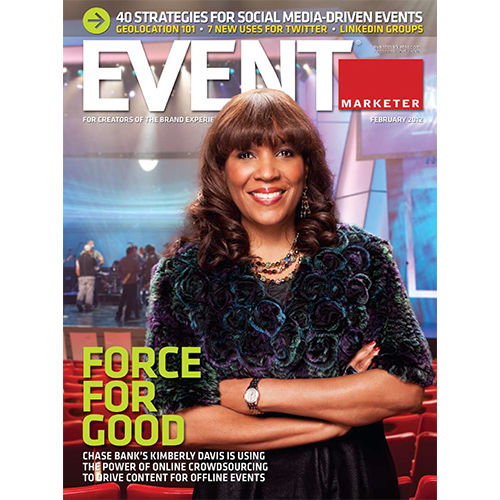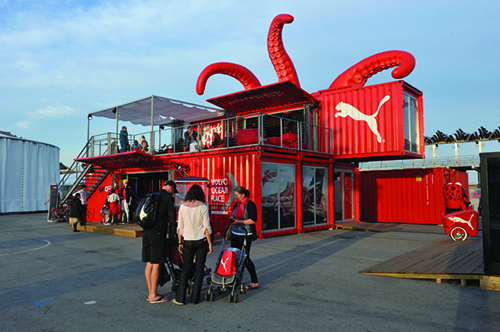THEME:
Marketers set their sights on millennials, the cloud becomes the hotspot for event practitioners to store, share and track data in real-time before and during events. Brands eschew the cross-country tour and instead go big in single markets. And the “fewer markets, bigger impact” strategy enables brands to hyper-target their approach to not only unique demographic populations, but to the geographic profiles of each market’s inhabitants.
TREND:
Brands slow their national tours and go big on single-markets events while hyper-local campaigns also gain traction. Example: For its Pedal for a Greener City campaign, Claritin Canada traverses Toronto in hand-painted Eco-cabs.
TREND:
Smart marketers push to maximize their trade show investments more than ever: Dell incorporates more fabric and aluminum into its booth, making it more lightweight, which also saves on shipping. It goes paperless to cut printing costs and stops handing out USB keys with content on them, opting to email the literature instead. In the end, Dell saves thousands of dollars in production costs.
CASE STUDY:
The Levi’s Mirror, Mirror tour reaches young female consumers on college campuses. Part of a push to connect with millennials and launch its Curve ID jeans collection, Levi’s activates a studio where women can get measured for the jeans, get makeovers, meet with fit specialists and take a photo.
CASE STUDY:
Coke’s brand pavilion at the 2012 Summer Olympics—a fan experience that transforms the architecture of the structure into a 35- minute interactive music-making journey—makes waves across the industry. Event marketers have made clever use of the exteriors of many a building and mobile vehicle, but few, if any, have made such impactful and interactive use of the architecture itself at this point.








